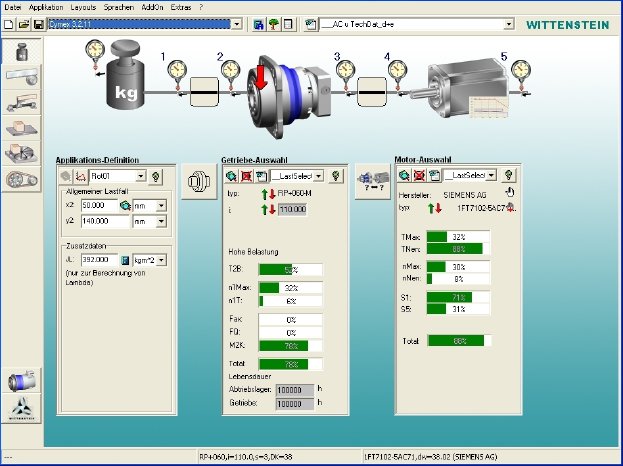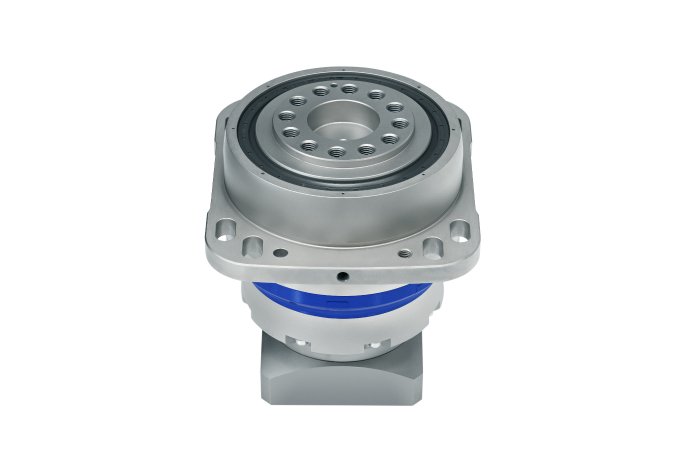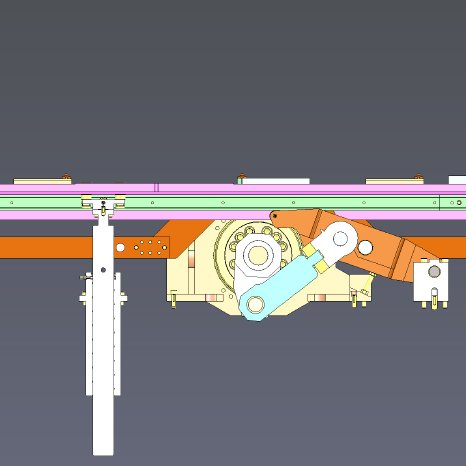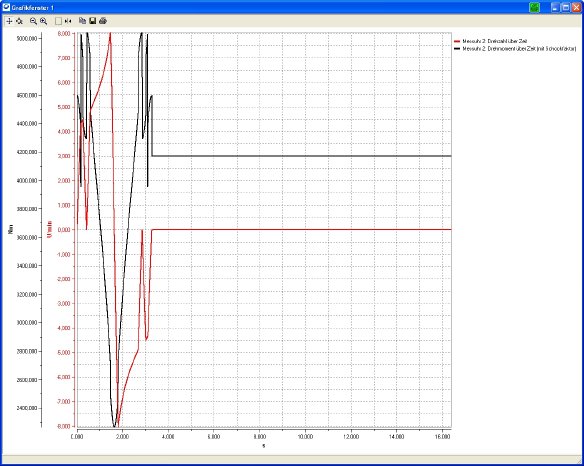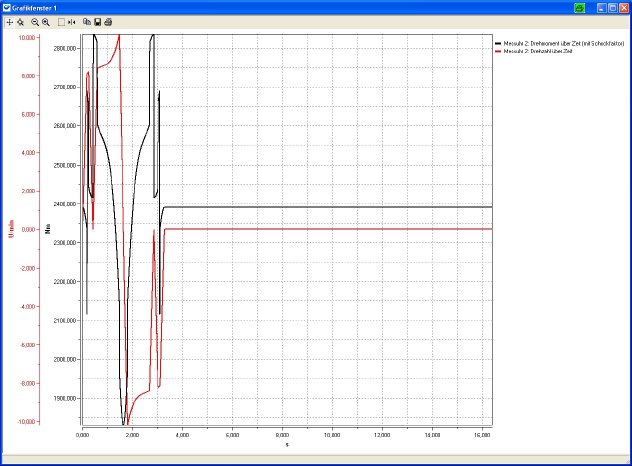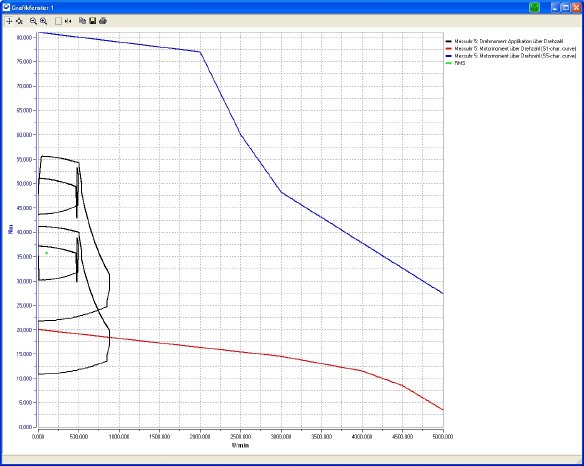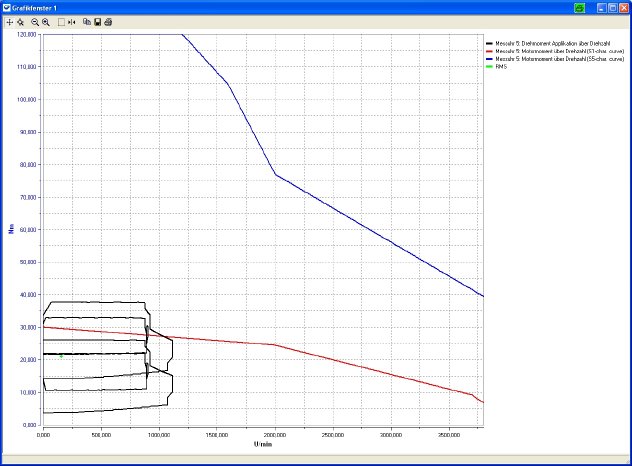As a specialist in mechatronic solutions for engineering applications in general and drive technology in particular, WITTENSTEIN alpha does not simply supply its customers with products like low-backlash planetary gearheads, servo right-angle gearheads and complete drive units. Comprehensive consulting expertise and a whole series of engineering services are an equally important part of its portfolio. With the help of deep-seated know-how and powerful software tools, the team designs kinematics to client specifications, carries out dynamic or multibody simulations and generates FEM analyses. The results of its detailed simulations and analyses can then be imported into the cymex® sizing tool via a special interface and evaluated as a basis for selecting suitable drive components. This same interface is used to evaluate the load data, which can be read out by the motor control directly at the existing machine. The WITTENSTEIN alpha Engineering team provides invaluable to its customers in this way – not just at the development stage but whenever a powertrain needs to be optimized during commissioning or normal operation. The formulated solutions reconcile what is technically possible with what is actually feasible – as a recent engineering project aptly illustrates.
Only a few days until commissioning: cycle rate increase results in overload
With only a short time to go until an already shipped machine tool with integrated handling systems was due to be commissioned in a country in Asia, the specifications had to be altered at the last minute in order to achieve far higher cycle rates than were originally planned. However, this modification at the end customer's request resulted in the lifting axis drive being overloaded; this drive is designed to move as much as two tons of mass and accelerate it at up to 2 m/s². The motor very soon overheated in the load holding position and was then switched off to prevent thermal damage. A solution had to be found as quickly as possible. Since a WITTENSTEIN RP+060 gearhead with a ratio of i=110 – which optimally meets the application's high requirements in terms of power density, precision, rigidity and tilting moments – is installed in the machine, the customer contacted the Engineering & Support team at WITTENSTEIN alpha in Ludwigsburg for assistance.
Remote simulation of the complete powertrain
After being given a brief rundown of the problem, the engineers began by gathering all the information they could about the basic conditions and constraints as well as any relevant application data such as function and process descriptions, the masses to be moved and held, acceleration speeds, lifting heights and cycle rates. Taking this data as a starting point, the motion sequence and the forces and loads occurring in the application were analysed and simulated using a special software tool for designing lever kinematics. The results of these calculations were subsequently imported as motion profiles into cymex® 3 – a potent software application for drive sizing developed by WITTENSTEIN alpha that has already proved its worth on many occasions in the past. The installed motor and its data then had to be incorporated into the simulation of the complete powertrain upfront of the next calculations. cymex® 3 ships with an integrated database for this purpose, which currently comprises more than 10,000 motors from over forty manufacturers and provides all information necessary to size a non-proprietary powertrain in the machine tool. In this particular case, a fast "remote simulation" was carried out over a distance of several thousand miles. The WITTENSTEIN Engineering team's follow-up calculations confirmed what had already been observed in practice – the motor was overloaded in the S1 continuous duty mode owing to the unfavourable lever ratios and higher cycle rates.
Powertrain analysis opens up several options for optimization
Several basic recommendations for optimization were derived from the simulation and analysis, during which various critical parameters to be identified. The use of a bigger motor that would guarantee the required performance was determined as one possible strategy. However, since the machine had already been delivered to the end customer, this would have meant removing the motor on site, adapting the machine to the modified connection geometry and purchasing the new motor. Owing to the considerable costs and – even more important – unacceptably long delivery time this option would have entailed, it was rejected. The next approach examined involved installing another gearhead with a larger ratio. In this case, the motor would not have had to produce as much torque – nevertheless, it would still have been run at a slight overload based on the simulation data. Quite aside from the fact that this would not have been consistent with the WITTENSTEIN engineers' claim to deliver solutions of excellence, this second suggestion was likewise beset with a long delivery period – and discarded along with the first. Modifying and optimizing the machine's lever ratios was judged to be a more feasible alternative – and simultaneously the best from a technical point of view. WITTENSTEIN alpha therefore calculated and simulated various lever ratios, submitted them to the manufacturer as a video and then collaborated in search of the perfect solution. Without being obliged to wait for new components, the point of force application of the lifting mechanism was subsequently shifted on site to enable the required cycle rates to be achieved with the existing motor-gearhead combination yet avoid overloading the powertrain. Thanks to this absolutely timely solution, the machine builder was able to ward off additional design and purchase costs and keep within the time schedule for acceptance in the field – in particular because no modifications were necessary to the powertrain's control system.
Mission completed in a matter of hours
If problems arise in the final days before a machine is due to be accepted, then qualified – and above all prompt – assistance is a must. In this real scenario, it took WITTENSTEIN alpha only a few hours between receiving the first call from Asia and being able to report the results of the simulation and propose alternative optimization strategies. Building on this experience with the lifting unit the manufacturer then also applied WITTENSTEIN alpha's expertise in connection with other, similar machine tools: the respective lever kinematics were calculated and the lever ratios optimized where appropriate based on the findings.
It makes no difference whether the complications occur during the design phase or in a genuine emergency – a holistic perspective on the drive application, in other words an analysis of the actual loads and motions, is essential in order to optimize the gearhead and motor. Specific engineering know-how like that available to WITTENSTEIN customers and powerful software tools such as cymex® 3 for simulating, calculating and sizing mechatronic drive solutions lay the groundwork. When there's no time to lose, they steer the Engineering team to the optimal solution without any detours.



